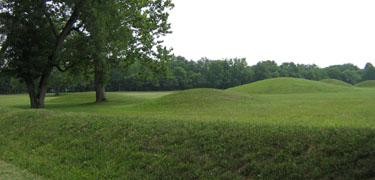
Last week my wife and I visited Serpent Mound. The site has been added by the United States Government to the tentative lists of sites to be considered for
 UNESCO World Heritage status. The Great Serpent Mound is 1,330 feet in length along its coils and averages three feet in height. Excavation of Serpent Mound revealed wood charcoal that was radiocarbon dated to a time consistent with the Fort Ancient culture (AD 1000 to 1500). It is the largest documented surviving example of a prehistoric effigy mound in the world.
UNESCO World Heritage status. The Great Serpent Mound is 1,330 feet in length along its coils and averages three feet in height. Excavation of Serpent Mound revealed wood charcoal that was radiocarbon dated to a time consistent with the Fort Ancient culture (AD 1000 to 1500). It is the largest documented surviving example of a prehistoric effigy mound in the world.The coils of the snake appear to be chosen to point towards celestial sites, such as the the extreme points on the horizon for sunrise and sunset. The site chosen is a rock outcropping on the rim of an ancient meteor crater. Moreover, near the serpent mound on the site managed by the State of Ohio there are far mor ancient mounds.

After the visit I chatted with young people from nearby Indiana, discovering that they had never heard of Serpent Mound. Again, our schools seem not to do a very good job in acquainting their students with the pre-history of our region, even of globally significant artifacts that are near to them.



